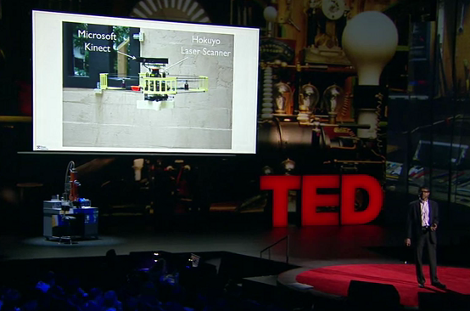
For [Gunnar]’s diploma thesis, he wanted to build an autonomous bicycle. There’s an obvious problem with this idea, though: how, exactly does a robotic bicycle stand upright? His solution to balancing the bicycle was a reaction wheel that keeps the bicycle upright at all times.
A bicycle is basically an inverted pendulum; something we’ve seen controlled in a number of projects. To balance his driver-less bike, [Gunnar] used a stabilizing wheel and an IMU to make sure the bicycle is always in the upright position. The bike measure the tilt and angular velocity of itself, along with the speed of the stabilizing wheel. To correct a tilt to the left, the stabilizing wheel spins clockwise, and corrects a rightward tilt by spinning counterclockwise.
While [Gunnar]’s solution of a bike wheel used as a gyroscope is clever – it uses common bicycle wheel, hugely reducing costs if someone wants to replicate this project – there’s not a whole lot of ground clearance. The size of the stabilizing wheel could probably be reduced by replacing the 7.4 kg steel wheel with a Tungsten, Osmium, or Lead disk, possibly becoming so small it could fit inside the frame. Still, though, a very nice build that is sure to turn a few heads.









Recent Comments